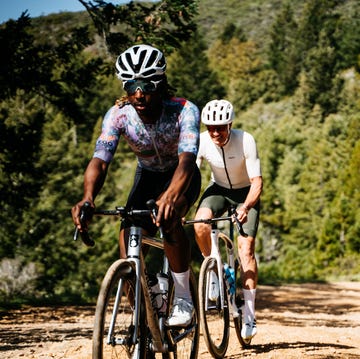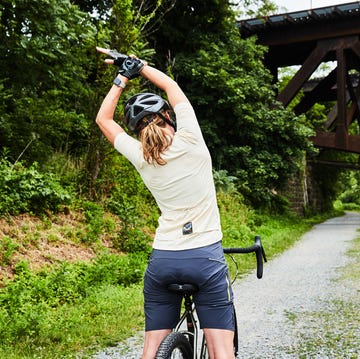Gear-obsessed editors choose every product we review. We may earn commission if you buy from a link. How we test gear.
Is Cycling Bad for Your Knees?
The short answer is no—as long as you don’t commit these mistakes.
Cycling is known for being a low-impact sport and a popular activity for those with joint issues. But, the repetitive actions of cycling, particularly pedaling upward of 4,000 to 5,000-plus revolutions per hour, can cause some pain and possibly cause problems if you’re not riding properly. So that may leave you wondering: Is cycling actually bad for your knees?
The answer isn’t really black and white. Cycling is great for your overall health and is easy on your joints, but there are more than a few cycling mistakes that contribute to knee pain. For some, issues with bike fit or technique compound over time to cause pronounced knee pain, the most common lower-body complaint in our sport. Research shows that up to 60 percent of recreational riders experience knee pain from overuse at some point in their riding journeys.
You want to have the smoothest cycling experience possible, and there are ways to make that happen. So we spoke with experts to break down all the causes of knee pain from cycling and ways to prevent it so you can keep pedaling pain-free.

John Vasudevan, M.D. is an associate professor at the University of Pennsylvania. He is board-certified in Physical Medicine & Rehabilitation and Sports Medicine. He is a Team Physician for UPenn Athletics and medical director of the Broad Street Run and Philadelphia Distance Run, and previously for the Rock 'n' Roll Half-Marathon and Tri-Rock Triathlon in Philadelphia. He is a director of the running and endurance Sports Medicine Program at Penn Medicine. Dr. Vasudevan provides non-operative management of musculoskeletal conditions affecting athletes and active individuals of all levels, and combines injury rehabilitation with injury prevention. He utilizes a variety of ultrasound-guided procedures and regenerative approaches such as platelet-rich plasma and percutaneous ultrasonic tenotomy. He sees patients at the Penn Medicine and the Philadelphia Veterans Administration hospital. Dr. Vasudevan attended medical school at the University of Wisconsin School of Medicine and Public Health in Madison. After his Transitional Year in Tucson, Arizona, he went to residency in PM&R at Thomas Jefferson University in Philadelphia and onwards to Stanford University for his fellowship in Sports Medicine. He has been in practice at the University of Pennsylvania since 2012.


4 Proven Ways to Feel Stronger on Long Rides

Mobility Moves for Your Upper Back

8 Potential Causes of Back Pain

How to Improve Your Ankle Mobility















